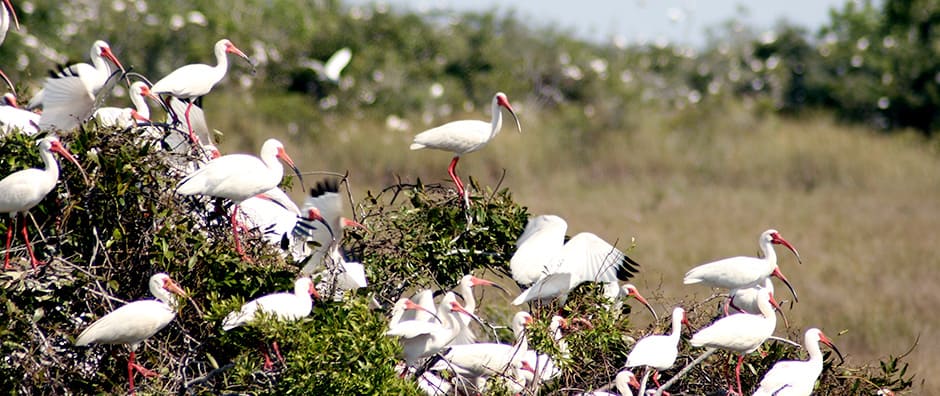Share this article
Past Water Conditions Important to Wading Birds
While past research on wading bird numbers in the Florida Everglades focused only on water patterns and conditions of the time, researchers recently found that information on water conditions and availability from up to three years before is also important.
“In the past, researchers had looked back only a matter of weeks, while I looked back three years in this study,” said James Beerens, the lead author of a new study published in PLOS ONE and an ecologist with the U.S. Geological Survey. “Those three years are just as important, if not more important, than the current conditions.”
In previous research that was published in The Auk, Beerens conducted field work where he captured over 200 wading birds in the Everglades including white ibises (Eudocimus albus) and great egrets (Ardea alba).
Using radiotelemetry, he tracked the birds from an airplane, and noticed that the birds had been selecting habitats differently based on previous year conditions, but it wasn’t clear why. In this more recent study, Beerens and two professors from Florida Atlantic University delved deeper into those findings and examined existing data from 2000 to 2009 on population numbers of wading birds including great egrets, white ibises, and threatened wood storks (Mycteria americana), along with foraging activities and bird locations.
Using a hydrology model in the Everglades made up of a network of gauges that record water levels and are then sent to a satellite and collected by a computer, Beerens and his team were able to determine how many wading birds you would expect to find based on water depths and availability of prey. “What’s nice about this is that you can pick up rapidly changing conditions,” he said.
With those data, researchers found that while wet conditions allow a build-up of fish and crayfish numbers for wading birds to consume, that does not result in increased bird numbers for a few years. Meanwhile, during the dry season, birds target fish and other prey that become concentrated in pools of water as the birds’ short-term strategy to obtain food in rapidly drying areas. In fact, under perfect dry season conditions including increased water levels in years prior to the dry season, prey for the birds becomes further concentrated in near-perfect water depths, which subsequently leads to an increase in wading bird populations. “We were able to link up this model with reproductive measures,” Beerens said.
The team then worked with computer scientists and developed publically available software that automatically downloads the water surfaces and uses maps, graphs and tables to display habitat suitability based on real-time current conditions as well as historical data. “This is good for managers pulling the levers and considering what is good for wildlife as well,” he said.
Beerens has been providing information to managers since 2009 as part of an inter-agency Multispecies Management Cooperative, looking at what current habitat conditions are for various species of concern such as the threatened wood stork. As for future research, Beerens plans to look at historical models of what conditions in the Everglades were like before it was drained and there was human intervention. “We can then use this as a baseline for ecosystem restoration,” he said.
For now, his message is simple: “If you have good long-term and short-term conditions, then you’ve got happy birds.”
Header Image:
A flock of white ibises in the Florida Everglades. In a recent study, researchers found that looking at past water patterns can explain a lot about current wading bird population numbers.
Image Credit: Jason Benfield








